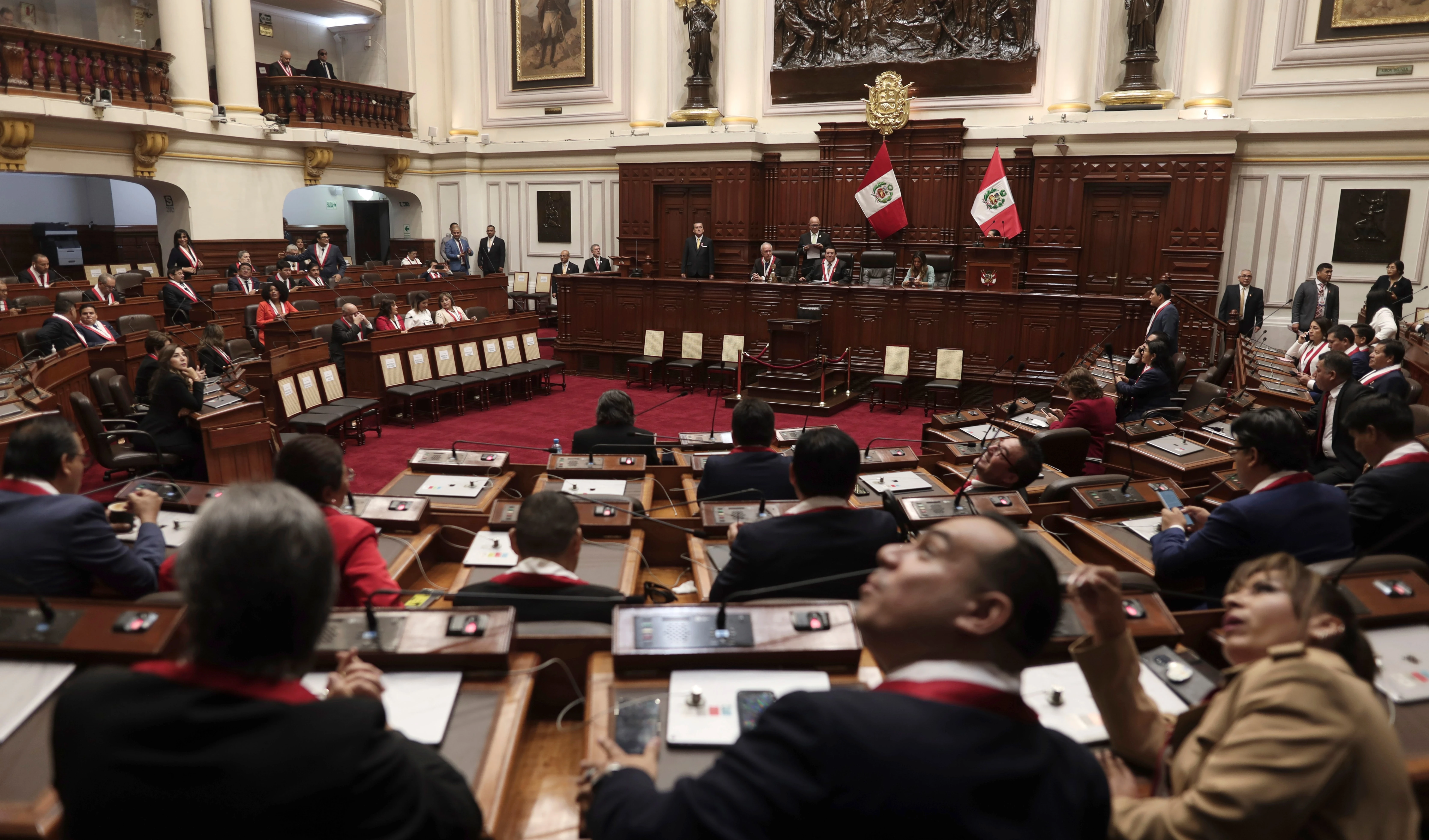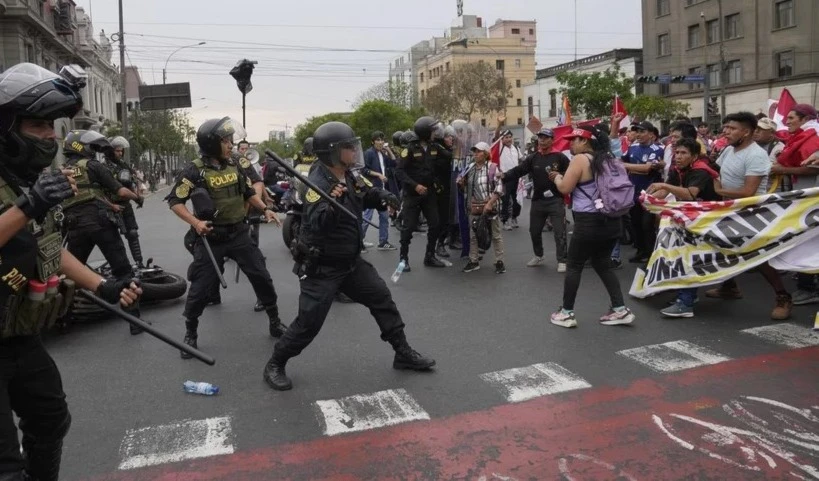Peru declares state of emergency in Lima after deadly protests erupt
Peru’s new government imposes a state of emergency in Lima after nationwide protests over corruption and insecurity leave one dead and more than 100 injured.
-

A demonstrator waves a Peruvian flag as a cardboard doll burns in front of Congress during a protest against new President Jose Jeri in Lima, Peru, on October 15, 2025. (AP)
Peru’s interim government announced on Thursday that it will declare a state of emergency in the capital, Lima, following weeks of violent protests over rampant crime, corruption, and political instability that have shaken the country’s fragile leadership.
The decision came after police shot dead 32-year-old rapper Eduardo Ruiz during clashes outside the Congress building on Wednesday, marking the first fatality since the youth-led demonstrations began. Authorities confirmed that a police officer from the criminal investigation directorate was responsible for firing the shot and has since been detained.
At least 113 people, including 84 police officers and 29 civilians, were injured during the confrontation, according to the Ministry of the Interior. The protests, which began as peaceful marches, took a violent turn after some demonstrators attempted to breach security barriers near Congress, prompting police to fire tear gas and rubber bullets.
Political turmoil and public anger
The unrest follows the impeachment of former President Dina Boluarte, who was accused by lawmakers of corruption and failing to address a growing wave of extortion and gang violence. She was replaced by Jose Jeri, then the speaker of Congress, who took office amid widespread skepticism about his government’s legitimacy.
Prime Minister Ernesto Alvarez told reporters that the state of emergency would apply “at least in Metropolitan Lima,” granting security forces expanded powers to restore order.
“We are taking this measure to guarantee the safety of all citizens,” Alvarez said after a late-night cabinet meeting.
President Jeri has also requested special powers from Congress to enact emergency laws on security and crime without requiring a full legislative vote, a move critics warn could deepen authoritarian tendencies within the government.
Read more: Peru ex-president Humala, wife get 15 years for money laundering
Youth at the forefront
The protests have been largely driven by the Generation Z collective, a youth-led movement demanding justice for victims of police violence and greater accountability from public officials.
The demonstrators accuse both the previous and current administrations of failing to confront organized crime groups such as Los Pulpos and Tren de Aragua, which have terrorized communities through extortion, kidnappings, and targeted killings.
Peru has faced mounting instability since 2022, when a succession of presidents were impeached or forced to resign amid corruption scandals and mass protests. Analysts warn that the state of emergency may temporarily calm the streets, but risks inflaming public resentment toward an authority already struggling to maintain legitimacy.
Human rights organizations have expressed concern that the emergency decree could pave the way for further abuses. The National Coordinator of Human Rights said evidence suggests that Ruiz was shot by a plainclothes officer, describing the killing as “an alarming signal of excessive force and impunity.”
As night fell on Thursday, hundreds of demonstrators gathered again outside Congress, holding candles and chanting for the government’s resignation.
Read more: Peru’s Congress ousts Boluarte amid protests and power vacuum

 3 Min Read
3 Min Read










